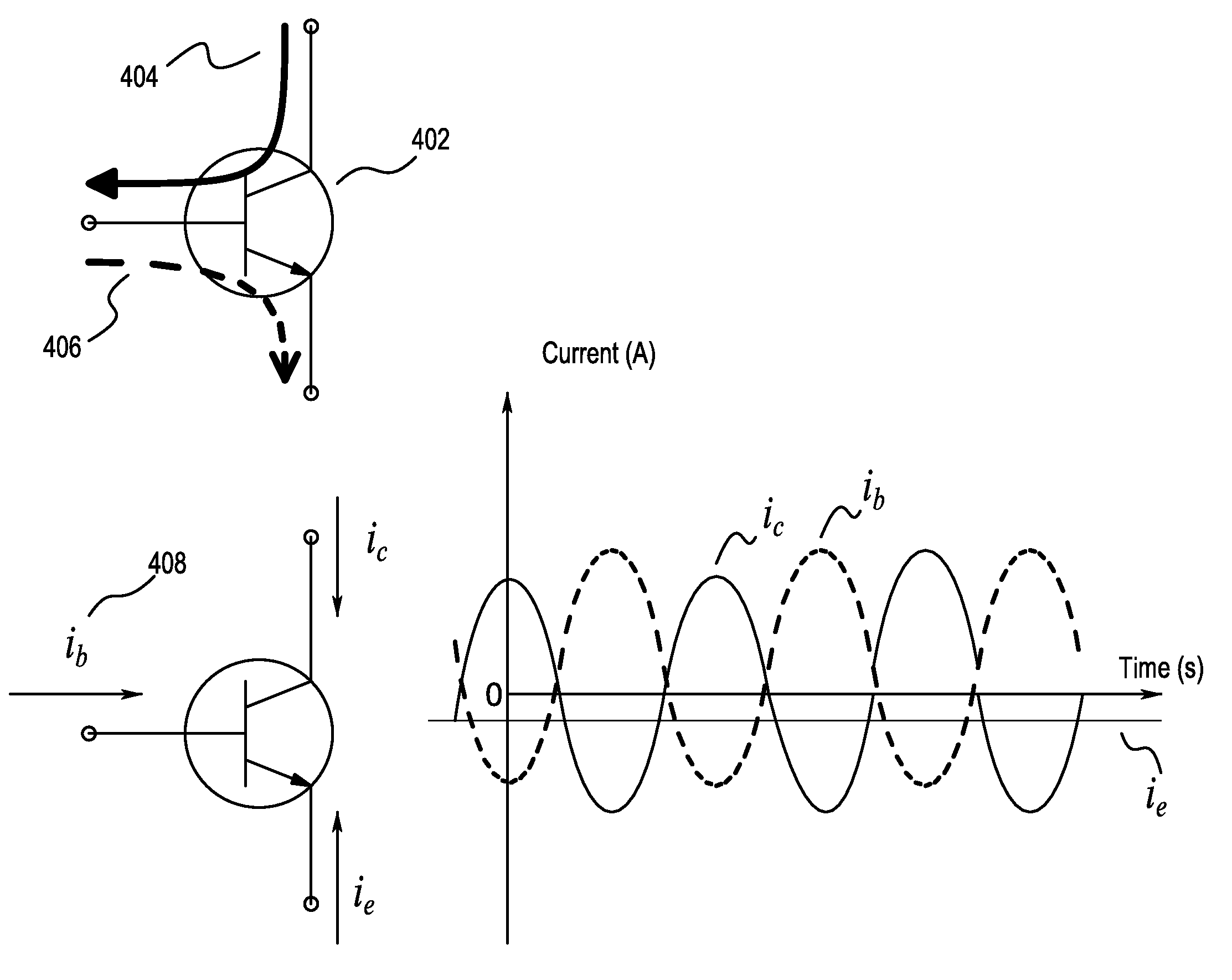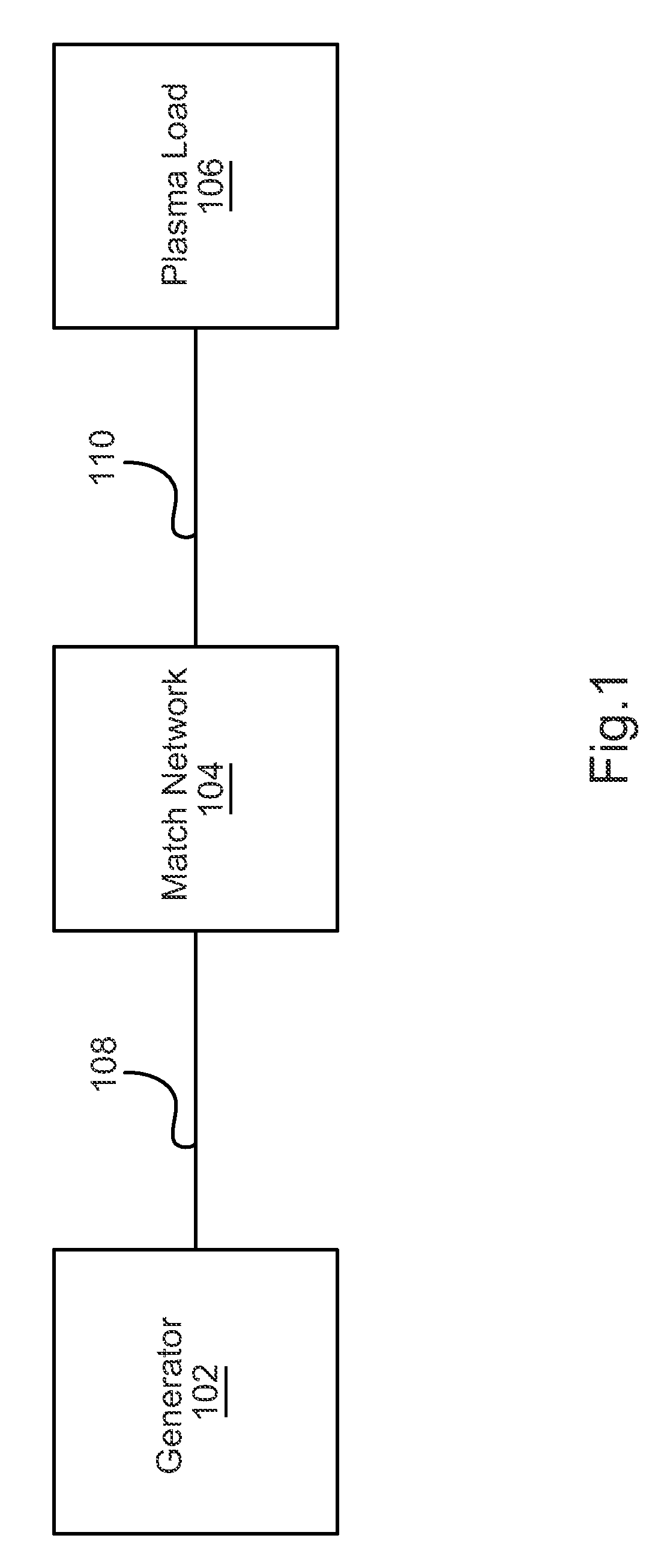Impedance-matching network using BJT switches in variable-reactance circuits
a variable-reactance circuit and network technology, applied in the field ofplasma processing, can solve the problems of only having two terminals, resistive elements in the network, high cost of pin diodes, and high cost, and achieve the effect of lowering the voltag
- Summary
- Abstract
- Description
- Claims
- Application Information
AI Technical Summary
Benefits of technology
Problems solved by technology
Method used
Image
Examples
Embodiment Construction
[0038]This disclosure will begin with a discussion of the problems faced, unexpected results discovered, and proposed device physics to explain the unexpected results.
[0039]A device is needed that can fulfill the role of a PIN diode as a switch for shorting capacitors or other reactive circuits between two terminals in order to create a variable reactance element for use in an impedance-matching network. This device should have low losses in both the on and off-states. It should also handle high voltage in the off-state and high current in the on-state. Switching control should be enabled via a terminal other than a terminal that passes RF current, thereby avoiding complicated, bulky, and expensive isolation circuitry. Unexpectedly these goals are achieved via a previously undiscovered bipolar junction transistor (BIT) mode of operation as described herein.
[0040]Typically, a BJT operated as a switch, conducts current between collector and emitter in an on-state, and blocks the flow ...
PUM
 Login to View More
Login to View More Abstract
Description
Claims
Application Information
 Login to View More
Login to View More - R&D
- Intellectual Property
- Life Sciences
- Materials
- Tech Scout
- Unparalleled Data Quality
- Higher Quality Content
- 60% Fewer Hallucinations
Browse by: Latest US Patents, China's latest patents, Technical Efficacy Thesaurus, Application Domain, Technology Topic, Popular Technical Reports.
© 2025 PatSnap. All rights reserved.Legal|Privacy policy|Modern Slavery Act Transparency Statement|Sitemap|About US| Contact US: help@patsnap.com



